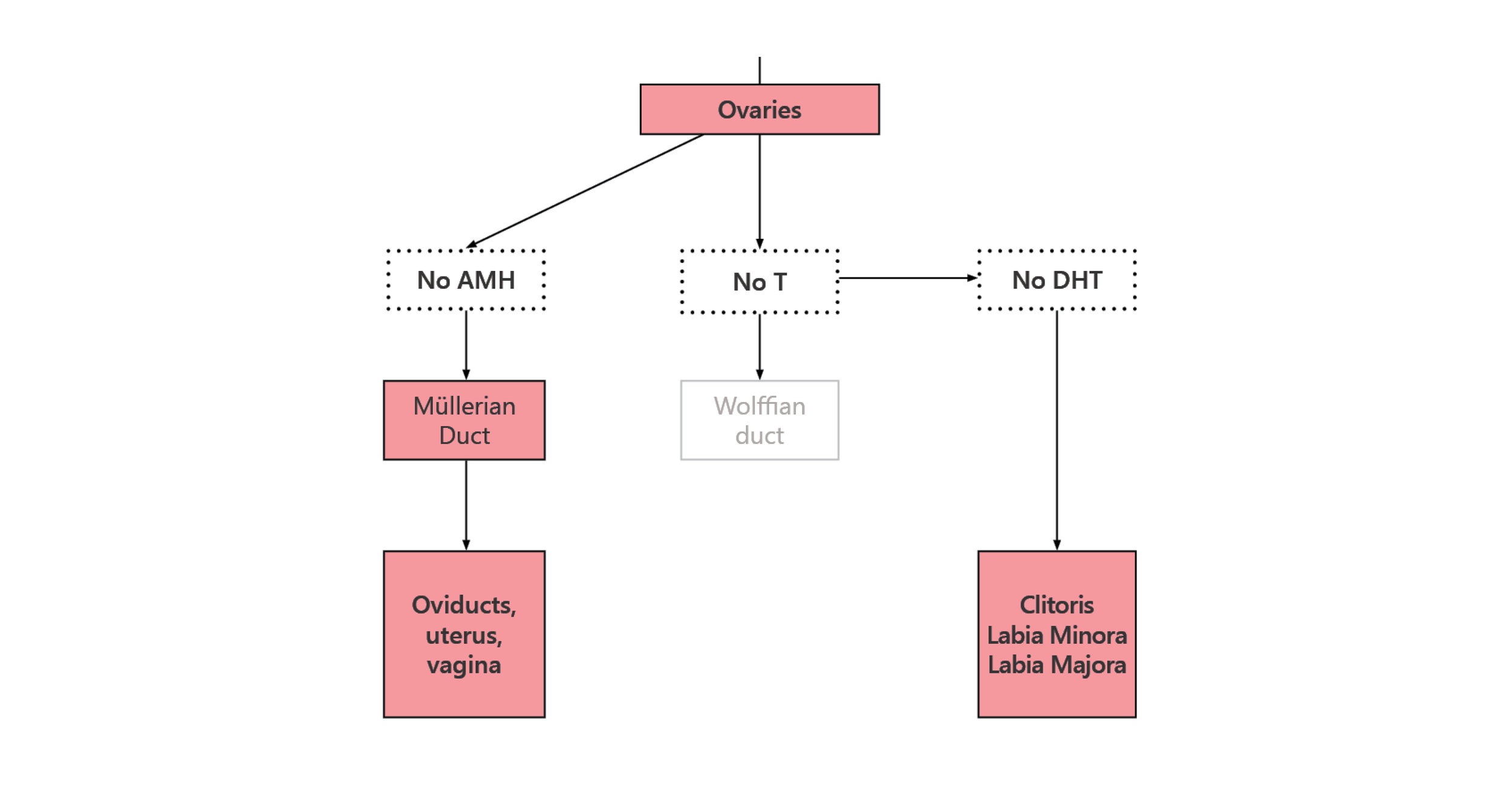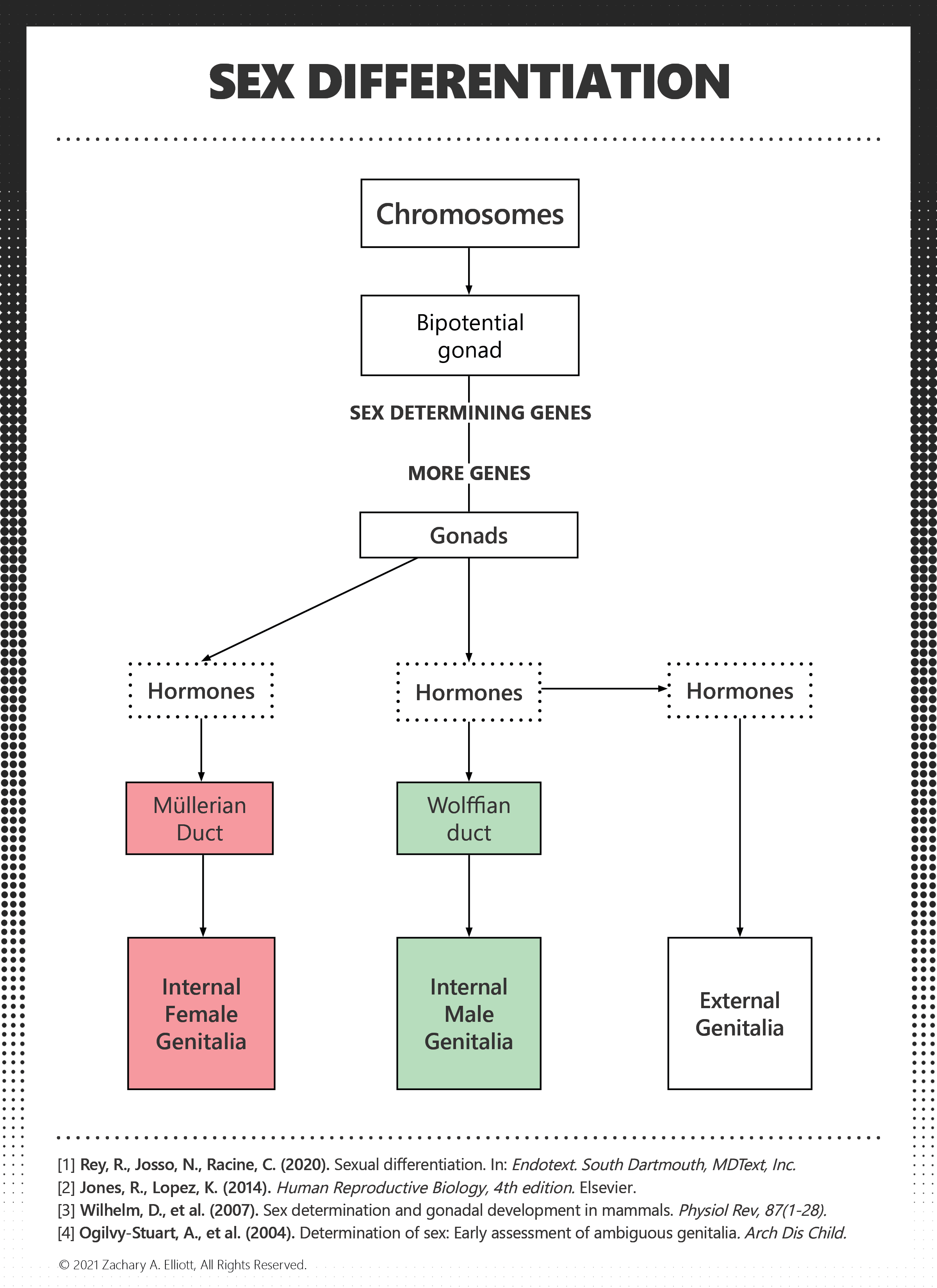Sex Development Charts
Access the full PDF of sex development charts here. You can also scroll through the gallery below and click on an image. You can then swipe left or right to go to the previous or next image, and zoom in and out.
Scientific Background
First, some basics: There are only two sexes, male and female. The male sex is the phenotype that produces small gametes, and the female sex is the phenotype that produces large gametes. This biological definition of male and female applies universally to all species that reproduce through two gametes of differing size (this includes us!). In humans and most other animals, male and female have specific reproductive structures that function to produce either gamete type (the gonads) and release it (the internal and external genitalia). Thus, sex development is the process through which a fetus develops these reproductive structures, and therefore, becomes a male or female.
Sex development occurs in two steps:
Determination: the development decision that directs the bipotential gonads to differentiate into ovaries (the egg-making factories) or testes (the sperm-making factories).
Differentiation: direction of the internal and external genitalia (the gamete transportation systems) down the male or female pathway once the gonad has been established.
To visually illustrate this process, I have created a series of flow charts, inspired by a paper on sex determination and congenital conditions of sex development (DSDs). The information on the flow charts is directly from peer-reviewed developmental biology papers and textbooks on human sex differentiation.
The mechanisms that regulate sex differentiation are so complex and time contingent that, occasionally, atypical variations and genetic mutations can occur in the system. Because of this, I show two things: 1) the sex development process for typical males and females, and 2) the sex development process for DSDs: congenital conditions which can result in atypical development of the gonads, the internal genitalia, and the external genitalia.
This complexity has gained attention of activists who wish to deconstruct the two sexes, claiming that people with DSDs are not male or female. But humans are a gonochoric species: individuals are either male or female throughout their entire life cycle. People with DSDs are not new sexes (this would require a third gamete type), and they are not both sexes (this would require the full development of both male and female gonads and genitalia in a single individual. A hermaphrodite has never existed in humans).
In reality, people with DSDs are males and females like everyone else. They have sex development disorders that can cause infertility and a host of other physical and psychological problems, some of which are life-threatening. Understanding the basic development process for these conditions can help fight against misinformation regarding human sex development while illuminating the complex processes that form these congenital conditions.
If you want to learn about the evolutionary origins of the two sexes, click here.
If you want to learn more about how we define the sexes, click here.
We are 100% independently funded. If you like our work, consider making a donation.


























